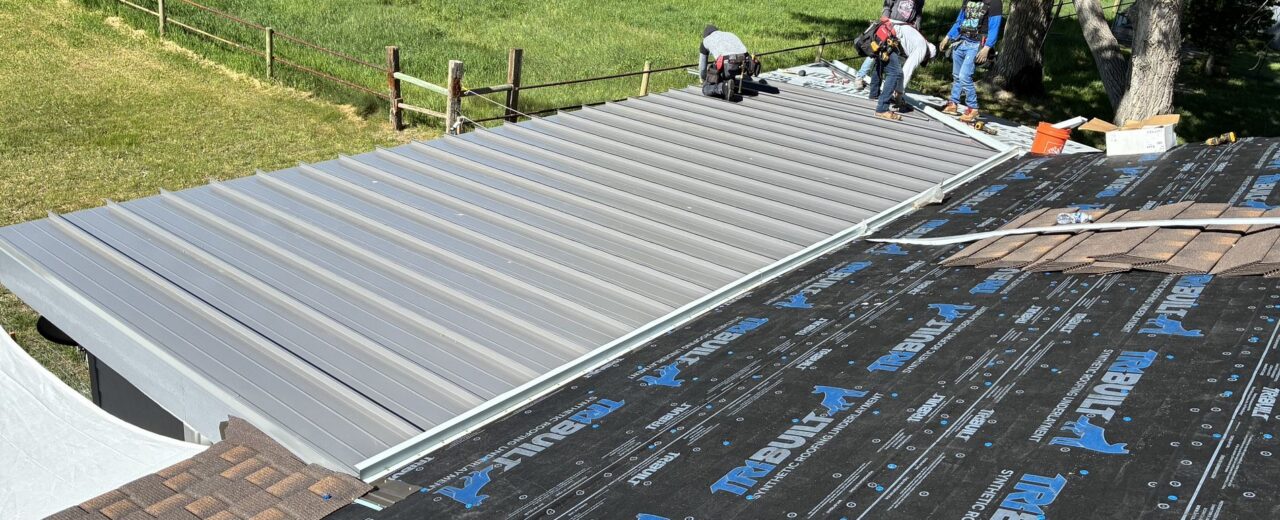The Pros and Cons of Metal Roofing: Is It Right for Your Home?
Metal roofing has gained significant popularity among homeowners in recent years—and for good reason. Known for its durability, sleek appearance, and long lifespan, metal roofing offers several advantages over traditional asphalt shingles. However, like any roofing material, it also has its drawbacks. If you’re considering metal for your next roof, here’s a balanced look at the pros and cons to help you make an informed decision.
Pros of Metal Roofing
1. Exceptional Longevity
One of the most significant benefits of metal roofing is its lifespan. While asphalt shingles typically last 15–25 years, a properly installed metal roof can last 40–70 years or more. Some premium options, like standing seam or copper, can even last up to a century with minimal maintenance.
2. Durability in Harsh Weather
Metal roofs are built to withstand extreme weather conditions. They’re resistant to high winds, heavy snow, hail, and even fire. Many metal roofs have wind ratings of 120 mph or higher and are Class A fire rated—the highest available.
3. Energy Efficiency
Metal reflects solar radiant heat, which can reduce cooling costs by up to 25% in warm climates. Many metal roofs are coated with special finishes to improve thermal performance, keeping homes cooler in the summer months.
4. Environmentally Friendly
Metal roofing is one of the most sustainable roofing options available. Most metal roofs are made from recycled materials and are 100% recyclable at the end of their lifespan. This makes metal an eco-conscious choice compared to asphalt shingles, which often end up in landfills.
5. Aesthetic Variety
Today’s metal roofing comes in a wide range of colors, finishes, and styles—including those that mimic traditional materials like wood shake, slate, and tile. Whether you’re going for a modern, rustic, or classic look, there’s a metal roofing option to suit your home.
Cons of Metal Roofing
1. Higher Initial Cost
One of the most significant downsides to metal roofing is the upfront cost. Installation can be two to three times more expensive than asphalt shingles. While the long-term savings in maintenance and energy may offset this, the initial investment can be a barrier for some homeowners.
2. Noise During Rain or Hail
Without proper insulation or underlayment, metal roofs can be noisy during heavy rain or hailstorms. Some homeowners enjoy the sound, but others may find it distracting. Proper installation techniques can help dampen the noise.
3. Denting and Scratching
While metal roofs are durable, they are not entirely impervious to damage. Large hailstones or falling branches can dent the surface, especially with softer metals like aluminum or copper. Some textured finishes are better at hiding minor damage.
4. Expansion and Contraction
Metal expands and contracts in response to temperature changes. If not installed properly, this movement can cause fasteners to loosen or panels to warp over time. Selecting a qualified contractor with experience in metal roofing is crucial to prevent long-term issues.
Final Thoughts
Metal roofing is an excellent choice for many homeowners, offering long-term value, durability, and energy savings. However, it’s crucial to weigh the higher upfront cost and unique maintenance needs. If you’re planning to stay in your home for the long haul and want a low-maintenance, eco-friendly option, metal roofing could be the perfect fit. Always consult with a trusted roofing professional to determine if metal roofing is right for your home and climate.


